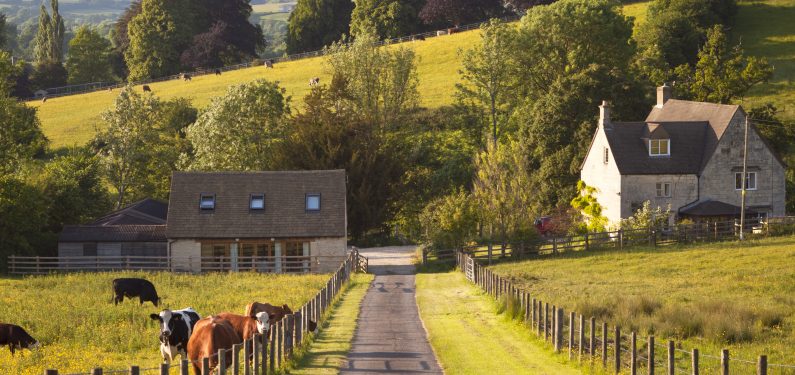
Expecting Too Much From Your Homeowner Insurance
December 31, 2014When your homeowner insurance policy doesn’t cut it for your home-farm
Homeowner’s Insurance Policy
The Homeowner’s Insurance Policy (HO) is considered as one of the most successful innovations in the insurance industry (Foundations, 1.3). The HO-3 policy provides insureds with an open perils coverage for his or her dwelling structure that addresses the loss exposures of nearly all insureds.
The term Open Perils refers to all “causes of loss” being covered except what is specifically excluded in the policy language. What incidental exposures are not covered in an unendorsed HO-3 policy can sometimes be added by endorsement to give the appropriate coverage. Because all of the risks associated with homeownership are, by and large, consistent among all insureds, companies can insure these risks and enjoy predictable loss models.
The HO policy is a great tool and meets the needs of many. However, there are things that a standard homeowner’s insurance policy does and does not cover. All too often, insureds with a homeowner’s insurance policy are inadequately insured because of exclusions within the homeowner’s policy language. The problem is, most of those insureds don’t even know it.
Limitations and Considerations for a Home-Farm
Insureds should be aware of acreage limitations, livestock limitations, business pursuit limitations, and more within the wording of their HO Policy. For example, in rural areas, insureds with 25 acres, a half-dozen horses, a four-stall barn, and a dwelling can usually be much better served, and more adequately covered, by a farmowner’s policy (FO). This type of policy gives broader coverage for liability, including providing farm and personal liability, and may cover many more on-premises business operations than a standard homeowners policy.
The eligibility requirements for a Homeowner’s Policy varies by the insurance company. Some insurers have a broader appetite and will allow more exposures on an HO policy than others. Nevertheless, insurance professionals run into some glaring concerns when reviewing a homeowner’s insurance policy that is being used to cover a “should-be” farmowner’s policy, regardless of the coverage extensions available in the HO policy.
If an insured has high-value out-buildings or barns, is heavy in on-premises and ag-related business pursuits, has multiple locations needing property coverage in addition to liability, is keeping a large amount of livestock, has large amount of acreage, is selling farm products such as freezer beef or fruits and vegetables, and many other exposures, he or she needs a farmowner’s policy.
Farmowner’s Policy
A Farmowner’s Policy is the most effective and efficient way to cover these loss exposures, from property to liability. For example, Coverage B on an unendorsed HO policy provides only a limit of 10% of the dwelling limit for outbuildings which are “appurtenant” to the dwelling. So, if the dwelling is insured to $250,000 there is an automatic $25,000 for coverage B structures.
This may be adequate for a detached garage while at the same time being completely inadequate for even a medium-sized horse barn. Additional problems arise when the building is being used for agricultural purposes and is not technically an “appurtenant” structure. The occurrence of a claim is not the appropriate time to find that a building was ineligible for Coverage B or your Coverage B limit was inadequate to insure the structure to value.
Additionally, an insured’s tractors, manure spreader, and other farm equipment are not considered household contents (Coverage C), as they are not used to service the dwelling, and insureds losing this machinery in a barn fire may find that their loss is uncovered if they are insured under an HO policy. Coverage G on an FO policy gives coverage for buildings and other structures which can include silos, detached garages, machinery buildings, and bank barns while Coverage E and Coverage F can provide coverage for farm machinery, equipment, supplies, and products.
In addition, insureds that have multiple locations with buildings to insure are further benefited from a farmowner’s policy as these premises can be added to the liability part and the buildings can be added to the coverage part of the policy. Insurers will typically not cover buildings at a secondary location for property damage under an HO policy, so the insured with a cabin in the mountains two hours away from home can receive coverage from a farmowner’s policy that would not be available to an insured with a homeowner insurance policy.
When purchasing a homeowner insurance plan it is important for insureds to bear in mind whether or not they have agricultural business activities that would fall outside of the definition of “incidental”. If the insured feels that they fall into this category, a conversation with an experienced agricultural insurance agent should be scheduled. Your agent should assist you in the process of determining your loss exposures and help you decide where you can be best and most adequately covered.
After gathering the necessary information about your premises and operations, the experienced ag agent will be able to determine how your policy needs to be written to protect you, your family, and your assets from property and liability losses. Helping to avoid claim denials through proper representation of risk should be one of your agent’s priorities. This is accomplished through a diligent information gathering process and properly written policies, whether that is Homeowners, Farmowners or a Commercial Insurance Package.
Resources:
Foundations of Insurance Production. Personal Insurance, Segment B. 4th Edition. Ed. Mary Ann Cook. The Institutes. (Pg 1.3)
Disclaimer: Information and claims presented in this content are meant for informative, illustrative purposes and should not be considered legally binding.

